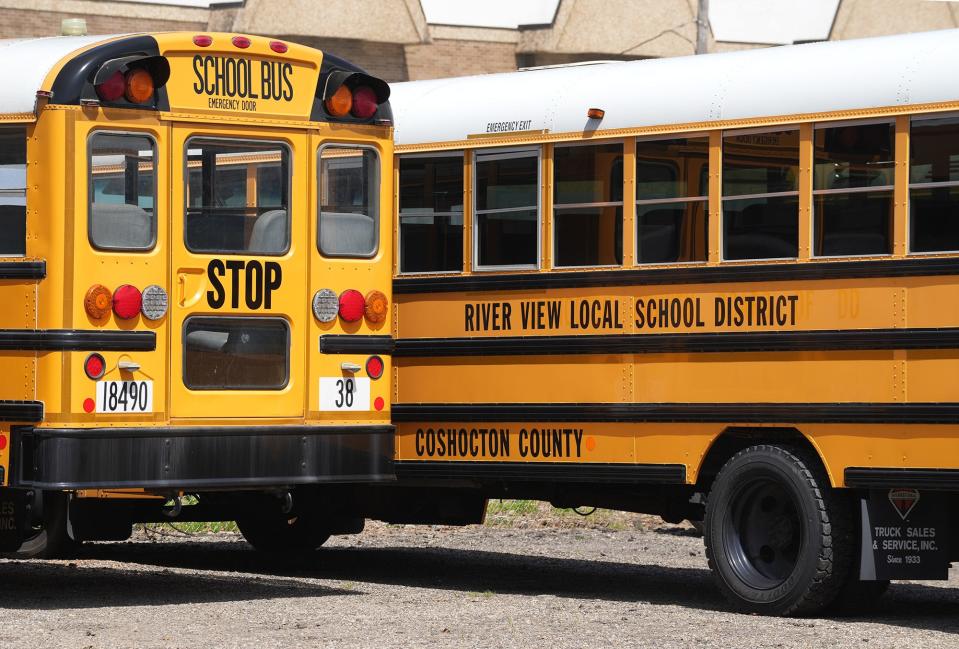Schools await permanent funding solution, decades after DeRolph v. State of Ohio case
Good morning, Columbus!
The Dispatch’s Education Team is currently in Florida for the Education Writers Association's National Seminar! We can’t wait to bring back what we learn this week to Columbus to sharpen our reporting as the new school year starts soon. And hopefully we’ll get a nice tan in the process.
If you have any story ideas or questions related to back-to-school, please send them our way! We have some stories in the work to make sure parents and students are prepared for the first day of school.
In the meantime, here’s what happening in Ohio education news:
Review Session: River View Local Schools in Coshocton County spans 376 miles, making it one of the largest in the state. This past school year it spent 15% of its $1.8 million transportation budget — around $272,000 — on fuel alone.
Those transportation costs — from fuel to bus maintenance to insurance — add up, and they're one of the many expenses that disproportionately affect rural school districts, said Superintendent Chuck Rinkes.

Last summer, Ohio lawmakers passed the Fair School Funding Plan through Gov. Mike DeWine's two-year, $75 billion state budget. The plan was the result of a yearslong campaign led by former Rep. John Patterson (D-Jefferson) and current Ohio House of Representatives Speaker Bob Cupp (R-Lima) to consult educators and determine a formula to properly fund public education in Ohio.
Over the past school year, Ohio education administrators have begun operating under the new plan, which acknowledges that a "one-size-fits-all" approach to funding public education is wrong, according to Richard Murray, executive director of the Coalition of Rural and Appalachian Schools (CORAS).
That previous one-size-fits-all approach was the subject of a landmark 1997 Ohio Supreme Court decision, DeRolph v. State of Ohio, in which justices ruled that the state's public education funding was unconstitutional. By relying on property tax values, the court said, a child's education was unfairly dictated by their ZIP code.

Last school year, under the new formula, which establishes a base cost of education per student multiplied by local income and property values, the state spent an average of $7,349 on each student — about a $1,300 increase from 2020, according to the Ohio Department of Education.
School funding is constrained to DeWine's 2022-2023 budget. That means the program is not a fully funded law and must be reapproved every two years when the governor proposes a new state budget.
"Ideally it turns into law. It was risky enough to go through one biennial budget,” said Richard Murray, executive director of the Coalition of Rural and Appalachian Schools (CORAS).
Read the rest of Céilí's story about equity in education funding here.
Extra Credit:
Olentangy Local School District students as young as 4 or 5 who may have questions about their gender are to meet with a counselor or school staff member — initially without their parents' knowledge — according to guidelines that have been shared with teachers and staff. Our colleague has the story.
Higher education reporter Sheridan Hendrix and rural reporter Céilí wrote a beautiful story about Joan Southgate who, in 2002, trekked 519 miles across three states and two countries retracing freedom seekers’ path on the Underground Railroad.
Eid-al-fitr, a Muslim holiday, is to be recognized by Hilliard City Schools as a district-wide holiday for all students, starting in the 2023-24 school year.
As always, thank you for reading! If you aren't already, please consider subscribing to the Dispatch. And if someone sent you this email, make sure you subscribe to this newsletter to never miss an issue.
Until next week,
Megan Henry
Email: mhenry@dispatch.com
Twitter: @megankhenry
This article originally appeared on The Columbus Dispatch: Education News: Equity in school funding depends on next state budget

